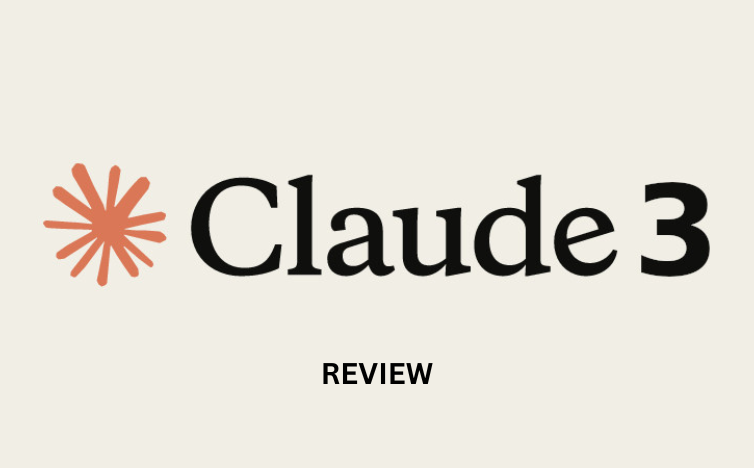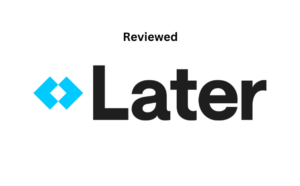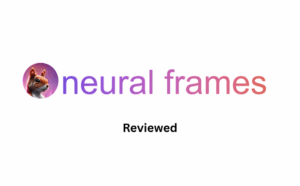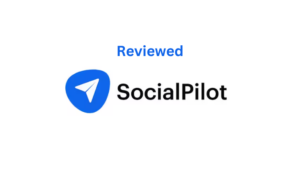In the world of artificial intelligence, Claude 3 is a symbol of innovation, showing us the amazing things AI-powered tools can do. In this blog post, we’ll take a closer look at Claude 3, from how it’s designed to how it’s changing different industries. Come with us as we explore Claude 3 and see how AI technology is changing right before our eyes.
Table of Contents
What is Claude 3?
Anthropic’s latest creation is the Claude 3, which is a new type of smart computer program. It’s actually made of three smaller programs called Claude Haiku, Claude Sonnet, and Claude Opus. Each one works differently, so you can choose which fits best for what you need, whether it’s how fast it works, how smart it is, or how much it costs. All of them can do cool things like writing stuff, making computer code, and even talking in different languages.
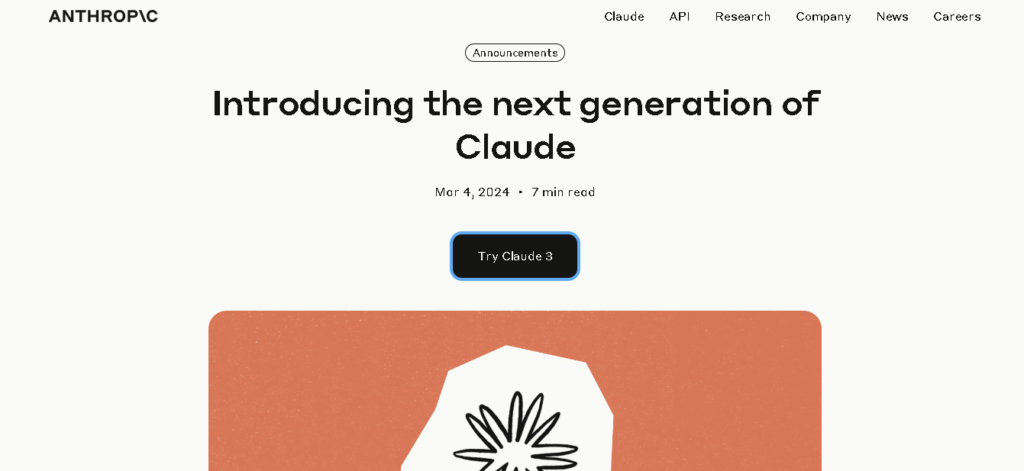
Features of Claude 3
Claude 3 introduces a range of advanced AI models tailored to redefine industry standards. From Claude Haiku to Claude Opus, each model is finely tuned for specific tasks, spanning creative content creation to intricate code development.
Advanced AI Models
Claude 3 comprises three distinct AI models—Claude Haiku, Claude Sonnet, and Claude Opus—each tailored for specific tasks, from generating creative content to writing code and engaging in multilingual conversations.
Versatility
Claude 3’s applications span across various industries, including healthcare, finance, education, and entertainment, showcasing its adaptability and versatility in addressing diverse needs.
Seamless Integration
Claude 3 seamlessly integrates with existing workflows and systems, facilitating collaboration and enhancing productivity. Its user-friendly interface ensures accessibility for users of all skill levels.
Strong vision capabilities
The Claude 3 models can see things really well, just like other top models out there. They can understand lots of different kinds of pictures, like photos, charts, graphs, and diagrams. This is super useful for big companies because they often have a lot of their important info stored in different kinds of files, like PDFs or slideshows.
Easy to use
The Claude 3 models are really good at following complex instructions with many steps. They’re especially great at keeping a brand’s voice and sticking to guidelines for responses, which helps create trustworthy customer experiences. Plus, they’re skilled at producing organized results, like JSON, which makes it easier to use Claude for tasks like understanding language and analyzing feelings.
Learn More: ChatGPT Review
Multilingual Therapy
Thanks to Claude 3’s amazing multilingual skills, talking to people in different languages has never been simpler! It can instantly translate between lots of different language pairs, create content in multiple languages that sounds natural and good, and even help you get better at languages with personalized grammar exercises. Whether you’re a world traveler, someone doing business internationally, or just really love languages, Claude 3 will become your new best friend. Say goodbye to language barriers!
Lengthy context and nearly flawless memory
Initially, the Claude 3 models will have a 200K context window, but they can handle inputs larger than 1 million tokens, which might be available to specific customers needing more processing power. To effectively process long prompts, the models need strong recall abilities. We tested this using the ‘Needle In A Haystack’ evaluation, where Opus showed nearly perfect recall, exceeding 99% accuracy. In some cases, it even detected when a sentence was artificially inserted into the text.
Improved Accuracy
Claude models are crucial for businesses of any size because they help serve customers. So, it’s super important that the results they give are really accurate, especially when dealing with lots of customers. Anthropic checks this by using a big set of tricky questions that focus on things the models might not be good at.
In the Claude 3 review, Opus did twice as well in giving the right answers to tough, open questions, and made fewer mistakes overall. Along with giving better answers, soon Claude 3 models will let users highlight the exact sentences in their sources to check their answers.

Pros and Cons of Using Claude 3
Pricing and models
Claude 3 comes in three models, each with its own abilities and price.
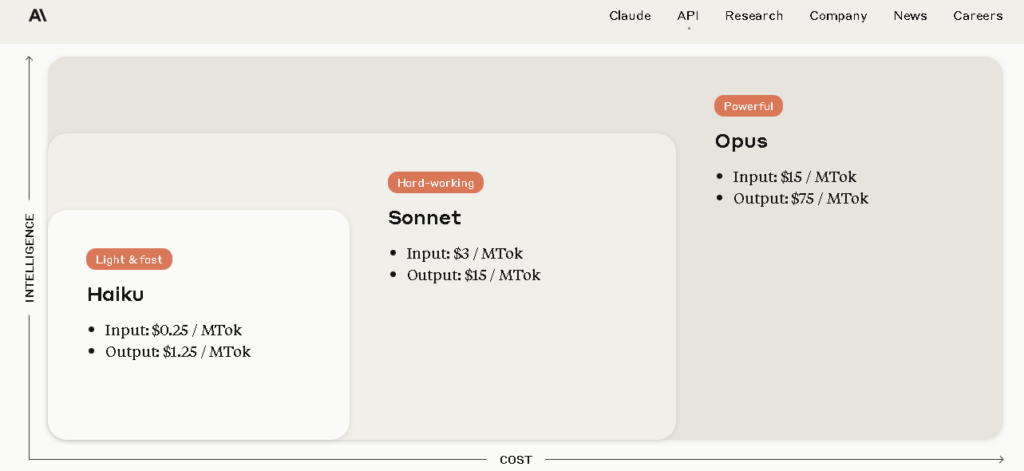
Opus
This is the most advanced model. It’s great at handling complex tasks and can figure out problems really well.
Price: $15 for every million tokens you use to input data, and $75 for every million tokens for the output.
Sonnet
This model is smart and fast. It’s perfect for big business jobs and can handle a lot of work without costing too much.
Price: $3.00 for every million tokens you use to input data, and $15.00 for every million tokens for the output.
Haiku
Haiku is the quickest and smallest model. It’s great for fast responses to simple questions or requests, making AI interactions feel more human-like.
Price: $0.25 for every million tokens you use to input data, and $1.25 for every million tokens for the output.
You can use Opus and Sonnet models right now through our API, which is open to all developers. You can sign up and start using these models right away. Haiku will be available soon. Sonnet powers the free experience on claude.ai, and Opus is available for Claude Pro subscribers.
Models’ Availability
You can also access Sonnet today through Amazon Bedrock and as a private preview on Google Cloud’s Vertex AI Model Garden. Opus and Haiku will be available on both platforms soon.
Ethical Considerations: Navigating the Path Forward
Like with any new technology, the emergence of AI tools like Claude 3 brings up big questions about what’s right and fair. Things like keeping data private and making sure the computer doesn’t favor one group over another are really important. Anthropic, the company behind Claude 3, promises to follow high ethical standards and be open and honest about how they develop AI. By putting ethics first and thinking about people, we can make sure AI helps everyone and makes life better for people.
Conclusion
Claude 3 marks a huge step forward in how AI tools are evolving. With its amazing abilities, wide range of uses, and focus on doing the right thing, Claude 3 brings a lot of exciting possibilities. Whether you’re a scientist pushing the limits of what’s possible or a business leader looking to innovate, Claude 3 has what you need to succeed in a world that’s always changing. Embrace the future of AI with Claude 3 and discover endless opportunities.
Faqs
What are the different models within Claude 3?
Claude 3 consists of three main models: Claude Haiku, Claude Sonnet, and Claude Opus, each tailored for specific tasks and levels of complexity.
What are the key features of Claude 3?
Claude 3 offers unmatched image understanding, accurate factual answers, and adaptability to various commands and requests.
How can I access Claude 3?
Claude 3 can be accessed through Anthropic’s API or platforms like Amazon Bedrock and Google Cloud Vertex AI. Different models may have different availability depending on location and subscription plan.
Is Claude 3 available for free?
Yes, Claude 3 (Sonnet) is available for free in 159 countries. However, access to the more powerful Opus model may require a paid subscription.
How accurate is Claude 3?
Claude 3 boasts near-perfect recall abilities, especially in handling long context prompts, and delivers accurate responses across various tasks.
Can Claude 3 handle complex math problems?
While Claude 3 excels in many areas, it may encounter challenges with complex math or logic problems that require extensive numerical processing.

